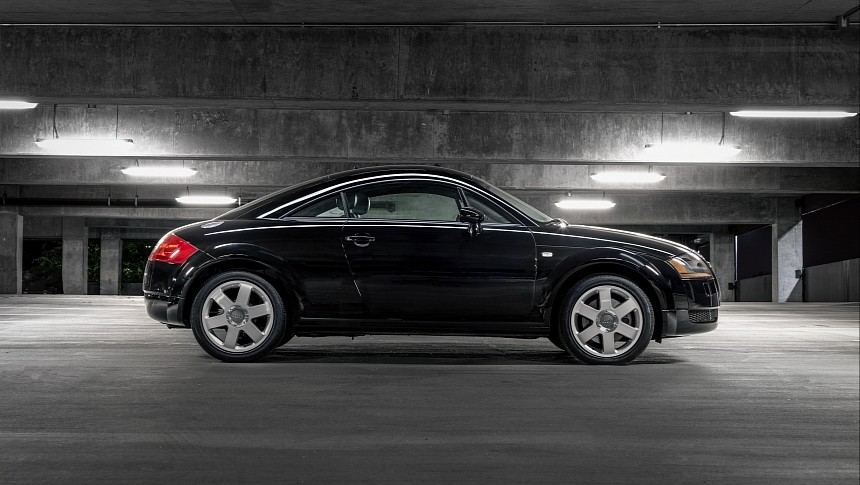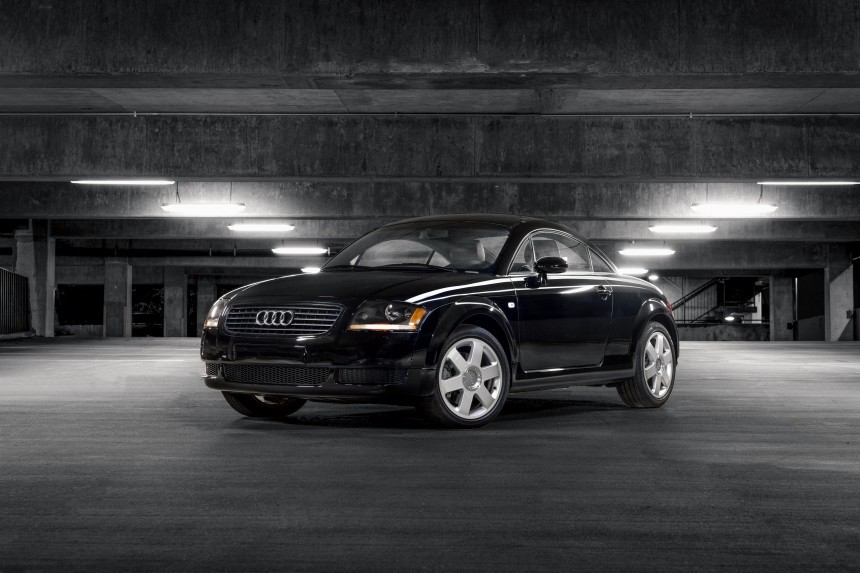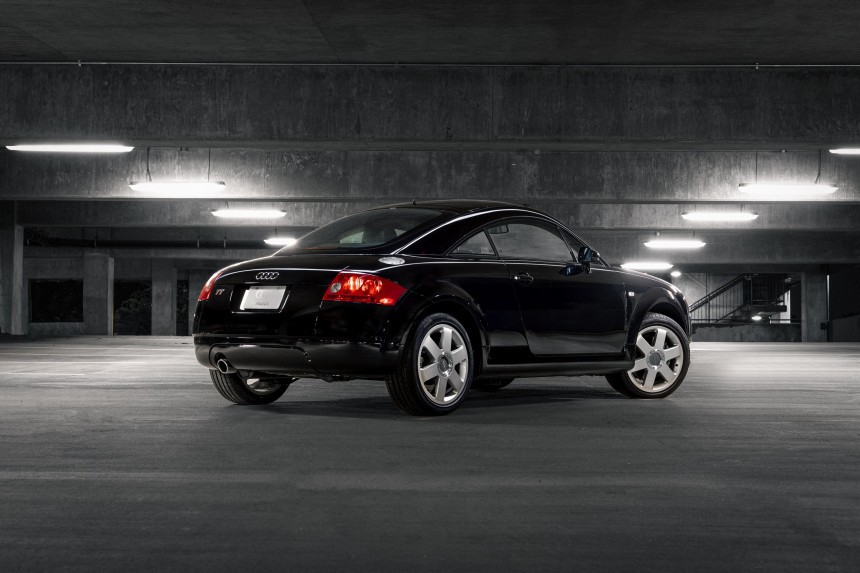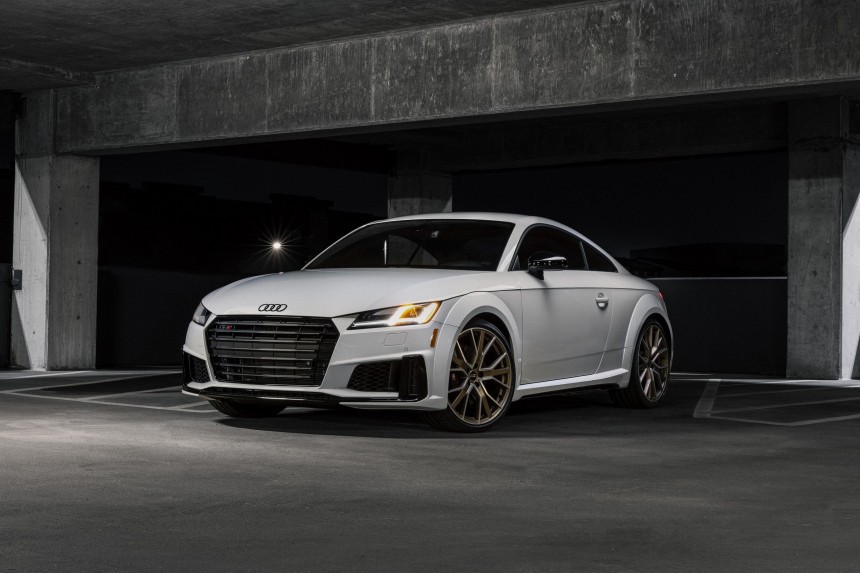Today, Audi is a behemoth in the luxury auto market. Like all good origin stories, it didn't start out this way. The brand went through some very hard times in the 80s and early 90s, even as it began to find success with models like the Coupe Quattro and Audi 80. By the mid-90s, that had started to change, thanks to a new product – the Audi A8. While that may be a story for another time, the A8's success brought forth a new type of car for Audi and one that would change the brand forever.
The Audi TT's story doesn't actually begin with the car itself. Instead, it starts with a shift in the brand’s nomenclature to match the A8's new name and look. The Audi 80 was now the A4, and the Audi 100 was the A6. For the '96 model year, Audi also began working on a new, smoother design, a departure from the boxiness of the iconic Quattro and 80 models the brand was known for. While working on this new look, four designers – Freeman Thomas, Torsten Wenzel, J Mays and Head of Design Peter Schreyer – penned the first TT sketches.
These sketches eventually became an early concept in September 1995. The car was shown at the IAA in Frankfurt that month. In short, audiences were enthusiastic about the new sports coupe. At the time, the market was beginning to blossom with offerings in this segment. Porsche would debut the Boxster in 1997, and Mazda was already producing the Miata. In one form or another, all three of these cars are present in the market today.
Wenzel recalls the design of the original TT concept: "To us, the greatest praise was when the trade press noted appreciatively that not much had changed from the study to series model, although we did, of course, have to adapt many details due to the technical specifications for the series version, including the proportions." Like the Boxster, the TT's design changed very little from concept to reality. Still, as Wenzel points out, changes did have to be made for various reasons. For example, the rear side window had to be better integrated into the car's profile for production.
Wenzel speaks further about the original TT's design, saying it has real staying power. It's still a "driving sculpture" in his eyes. Circles played a large part in the car's initial design, along with a large helping of Bauhaus influence – there are no wasted lines on the original design, something you may not be able to say about the current TT. "At Audi Design, we always follow the philosophy of 'less is more.' Bringing out the Audi TT Coupé's unique character by reducing it to the essentials was a challenging and special undertaking for us, designers," says Wenzel.
By 1998, series production began. Initially, Audi produced the TT as a coupe, later adding the now-iconic roadster for the 1999 model year. The TT is an early example of Volkswagen Auto Group parts sharing – the TT's engine was passed on to the fourth-generation Golf's engine. Production was handled by Audi Hungaria Motor Kft. Once painted, TT bodies were moved overnight by train from Ingolstadt to Hungary, which is where final assembly was handled.
Between 1999 and 2006, Audi would manufacture 90,733 roadsters and 178,765 coupes, each with a few engine offerings. Some were offered with four-cylinder turbo engines, just as the TT today is. These produced 147 horsepower (150 ps) initially. But as the years rolled by, power rose to 221 hp (225 ps). Volkswagen's VR6 engine was offered as well, which made 246 hp (250 ps). These early TTs were also offered in some interesting colors and interior specs, including Audi's Nogaro Blue and the famous "baseball" stitched brown leather interior.
By the time 2006 rolled around, Audi had decided the TT was successful enough to live on for a second generation. Once again, Audi led with the launch of a coupe, with the roadster following in 2007. Audi was also leaning into a more streamlined production method, which meant the TT's platform was now shared with the A3 – the brand's entry-level Jetta-sized sedan. But the A3 was just a much nicer Jetta, at least from a mechanical point of view.
However, the second-gen TT stepped things up technically. Audi now offered adaptive dampers with the brand's magnetic ride control. For the 2008 model year, Audi introduced the TTS, which got a new 2.0-liter turbocharged engine making 268 hp (270 ps). This was shared with the Golf GTI of the era. However, the real highlight of the second-gen TT is the TT RS.
Here, Audi returned to the five-cylinder engine. This turbo monster made an impressive 355 horsepower (360 ps) in the TT RS Plus, though tuning has pushed these engines into the four-figure horsepower range. Moreover, the RS was initially only available with a manual transmission- the one and only way to get Audi's 5-pot with a stick since the Quattro. Audi also introduced a 2-liter diesel engine for the TT, making it the first sports car to run on diesel.
By 2014, the TT was in need of another refresh. The TT got more powerful, lighter, and was still offered with a manual transmission. By this time, the TT's first generation was old enough that Audi deemed the original design worth revisiting. As such, the third-gen TT is much more a reflection of the initial car's design than the second generation. For the third generation, Audi focused much more on technical changes than mechanical ones – though these models also got more powerful, and the car's ubiquitous dual-clutch transmission was much improved.
Audi Virtual Cockpit was a first for the TT, and the brand's lineup as a whole were early adopters of the digital gauge clusters that are so prevalent today. Audi began using OLEDs for its lighting solutions as well, and tweaks were made to the brand's adaptive dampers, greatly increasing the contrast between driving modes. Of course, engines got a power bump as well. The four-banger TTS now made 305 hp (310 ps). The TT RS was even more powerful, making 394 hp (400 ps).
Unfortunately, this is where the story ends for the Audi TT. The brand is beginning to phase out the gas-powered coupe. However, I don't believe this will be the end of it. The TT is a car that, more than anything, is about how well parts-sharing between brands can work. While we'll probably never see that five-cylinder engine in the TT again, I'd be willing to bet a new TT will surface in a few years, this time powered by the very same electric batteries and motors as the new Porsche Boxster/Cayman.
These sketches eventually became an early concept in September 1995. The car was shown at the IAA in Frankfurt that month. In short, audiences were enthusiastic about the new sports coupe. At the time, the market was beginning to blossom with offerings in this segment. Porsche would debut the Boxster in 1997, and Mazda was already producing the Miata. In one form or another, all three of these cars are present in the market today.
Wenzel recalls the design of the original TT concept: "To us, the greatest praise was when the trade press noted appreciatively that not much had changed from the study to series model, although we did, of course, have to adapt many details due to the technical specifications for the series version, including the proportions." Like the Boxster, the TT's design changed very little from concept to reality. Still, as Wenzel points out, changes did have to be made for various reasons. For example, the rear side window had to be better integrated into the car's profile for production.
By 1998, series production began. Initially, Audi produced the TT as a coupe, later adding the now-iconic roadster for the 1999 model year. The TT is an early example of Volkswagen Auto Group parts sharing – the TT's engine was passed on to the fourth-generation Golf's engine. Production was handled by Audi Hungaria Motor Kft. Once painted, TT bodies were moved overnight by train from Ingolstadt to Hungary, which is where final assembly was handled.
Between 1999 and 2006, Audi would manufacture 90,733 roadsters and 178,765 coupes, each with a few engine offerings. Some were offered with four-cylinder turbo engines, just as the TT today is. These produced 147 horsepower (150 ps) initially. But as the years rolled by, power rose to 221 hp (225 ps). Volkswagen's VR6 engine was offered as well, which made 246 hp (250 ps). These early TTs were also offered in some interesting colors and interior specs, including Audi's Nogaro Blue and the famous "baseball" stitched brown leather interior.
By the time 2006 rolled around, Audi had decided the TT was successful enough to live on for a second generation. Once again, Audi led with the launch of a coupe, with the roadster following in 2007. Audi was also leaning into a more streamlined production method, which meant the TT's platform was now shared with the A3 – the brand's entry-level Jetta-sized sedan. But the A3 was just a much nicer Jetta, at least from a mechanical point of view.
Here, Audi returned to the five-cylinder engine. This turbo monster made an impressive 355 horsepower (360 ps) in the TT RS Plus, though tuning has pushed these engines into the four-figure horsepower range. Moreover, the RS was initially only available with a manual transmission- the one and only way to get Audi's 5-pot with a stick since the Quattro. Audi also introduced a 2-liter diesel engine for the TT, making it the first sports car to run on diesel.
By 2014, the TT was in need of another refresh. The TT got more powerful, lighter, and was still offered with a manual transmission. By this time, the TT's first generation was old enough that Audi deemed the original design worth revisiting. As such, the third-gen TT is much more a reflection of the initial car's design than the second generation. For the third generation, Audi focused much more on technical changes than mechanical ones – though these models also got more powerful, and the car's ubiquitous dual-clutch transmission was much improved.
Audi Virtual Cockpit was a first for the TT, and the brand's lineup as a whole were early adopters of the digital gauge clusters that are so prevalent today. Audi began using OLEDs for its lighting solutions as well, and tweaks were made to the brand's adaptive dampers, greatly increasing the contrast between driving modes. Of course, engines got a power bump as well. The four-banger TTS now made 305 hp (310 ps). The TT RS was even more powerful, making 394 hp (400 ps).
















